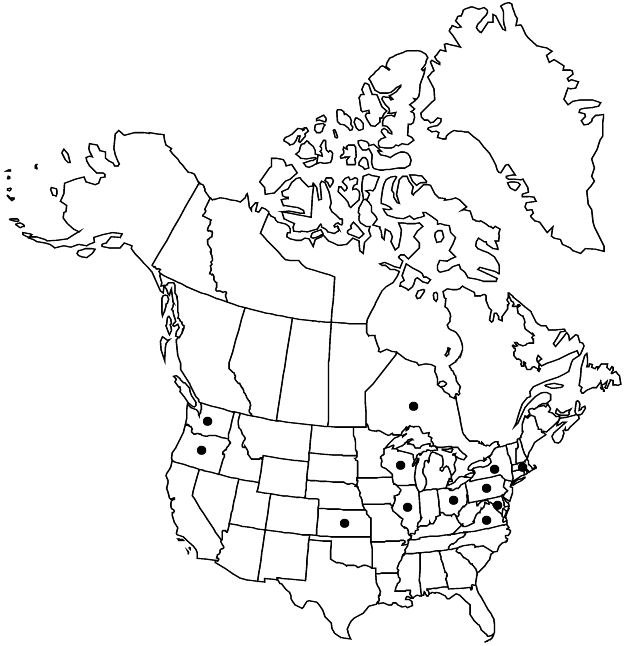Malus toringo
Tuinb.-fl. 3: 368. 1856.
Trees, sometimes shrubs, 30–80(–100) dm. Stems to 30 cm diam.; bark purplish brown, smooth, split irregularly when old; young branches orangish brown and puberulent, becoming dark purple or purplish brown and glabrous; flowering shoots developing as spurs, rarely as thorns, (5–)15–20(–35) mm. Buds purplish brown, ovoid, 20–30 mm, glabrous or only terminal scale margins puberulous. Leaves conduplicate in bud; isomorphic; stipules deciduous, lanceolate, 4–6 mm, apex acute or acuminate; petiole 10–25 mm, puberulous; blade narrowly elliptic, elliptic, or ovate, 3–7 × 2–4 cm, base broadly cuneate or rounded, margins usually 3-lobed, serrate, apex acute, abaxial surface puberulous when young, veins puberulous at maturity, adaxial glabrous. Panicles umbel-like; peduncles absent; bracteoles deciduous, filiform, 4–5 mm. Pedicels 20–25 mm, pubescent or subglabrous. Flowers 20–30 mm diam.; hypanthium subglabrous or pubescent; sepals lanceolate, 6–9 mm, to 2 times as long as tube, apex caudate-acuminate, abaxial surface glabrous, adaxial tomentose; petals white, sometimes pink-white, elliptic-obovate, 15–18 mm, claws 1–2 mm, margins entire, sometimes crenulate, apex rounded; stamens 20, 7–9 mm, anthers yellow before dehiscence; styles 3 or 4(or 5), basally connate to 1/2 length, 8–10 mm, slightly longer than stamens, proximally villous or lanate. Pomes red or brownish yellow, subglobose, 6–8(–10) mm diam., cores enclosed at apex; sepals deciduous; sclereids absent or relatively few surrounding core. Seeds reddish brown. 2n = 34, 51.
Phenology: Flowering Apr–Jun; fruiting Aug–Sep.
Habitat: Slopes, mixed forests, or shrublands
Elevation: 100–2000 m
Distribution

Introduced; Ont., Ill., Kans., Md., Mass., N.Y., Ohio, Oreg., Pa., Va., Wash., Wis., Asia.
Discussion
Malus toringo is possibly naturalized in Europe.
Variety sargentii (Rehder) Asami is distinguished by its horizontally spreading branches, pure white, suborbiculate petals, and dark red fruits with a slight bloom; var. zumi (Matsumara) Asami is recognized by its ascending and spreading branches (Asami).
Malus ×zumi (Matsumura) Rehder has been reported for Ohio. The hybrid is morphologically similar to M. toringo, but differs by its larger flowers and fruits and the vigorous shoot having sparsely distributed, only slightly lobed leaves. It has been considered by some to be a variety of M. toringo and by others to be a hybrid between M. baccata and M. toringo.
Malus sieboldii Rehder and Pyrus sieboldii Regel are illegitimate names that pertain here.
Selected References
None.